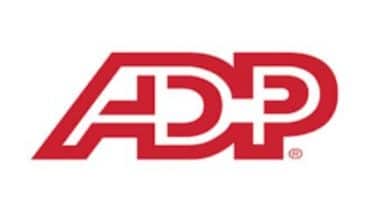A roadmap is essential if you’re on a journey and want to get there on time. Your product is no different. A product roadmap is somewhat similar. There is a goal at the final stage, but getting there can be tricky. Hence, here we cover all aspects of a product roadmap, including how to create one, an example, software, and strategy.
What Is A Product Roadmap?
A product roadmap is a high-level overview of the development plans for a product or service. It includes the product vision, objectives, and strategy. The roadmap outlines the timeline for development and identifies the key milestones. The roadmap is a living document updated regularly as the product evolves. For example, product managers and teams usually use a product roadmap to communicate the product vision and strategy to stakeholders.
However, a product roadmap is an important tool for product managers. It helps them to communicate the development plans to stakeholders and ensure everyone is on the same page. It also helps to track progress and identify any potential risks or problems that can impact product or service delivery.
What Are The Types Of Product Roadmap?
There are many product roadmaps and below are a few you should know.
#1. Status-oriented Roadmap
A status-oriented roadmap is a roadmap that focuses on the current status of a project. This type of roadmap is useful for project managers who need to track the progress of a project and identify any potential risks. Meanwhile, a status-oriented roadmap typically includes the following information:
- First, the current status of the project.
- Secondly, the project’s milestones.
- Thirdly, the project’s deliverables.
- Fourthly, the project’s risks.
- And finally, the project’s dependencies.
Hence, You can also use this roadmap to communicate your project’s status to stakeholders and others.
#2. Theme-oriented Roadmap
Every great journey starts with a destination in mind. The same is true for any project, whether it’s a website redesign, launching a new product, or developing a new feature for an existing product. Without a destination (or roadmap), it’s easy to get lost along the way.
A theme-oriented roadmap is a tool that can help keep your project on track by identifying key milestones and deliverables at each stage. This type is helpful especially when working on complex projects with multiple stakeholders. It is also a useful tool for communicating your plans to others. The benefits of using a theme-oriented roadmap include:
- Improved clarity and communication of project plans
- Greater accountability and buy-in from stakeholders
- Increased transparency of project status and progress
- Reduced risk of scope creep and project delays
Hence, if you’re working on a large or complex project, consider using a theme-oriented roadmap to help keep your project on track.
#3. Outcome-oriented Roadmap
An outcome-oriented roadmap focuses on achievable results, rather than specific steps. This is often used where there is uncertainty about the best way to achieve a goal. It can be helpful for organizations working towards long-term goals, as it can help them identify, provide a clear and concise way to track progress, and prioritize actions to achieve desired outcomes.
One advantage of using an outcome-oriented roadmap is that it can help to ensure everyone is working towards the same goal. This can be especially important in large organizations with many different stakeholders. Another advantage is that it can help to identify potential risks and opportunities early on.
There are also some potential disadvantages to using an outcome-oriented roadmap. One is that it can be difficult to plan for and track progress if the goal is very nebulous. Another is that it can be easy to get sidetracked if different stakeholders have different ideas about the goal.
How To Create A Product Roadmap
Creating a product roadmap can be a daunting task, but here’s how to create one, alongside an example, software, and strategy. The processes to create a product roadmap are as follows:
#1. Define Your Product Strategy
Before you can create a product roadmap, you need to have a clear understanding of your product strategy. This will help you determine your product vision and what you want to achieve with your product.
For example, define your product roadmap strategy by including an overview of your product’s development process, from initial conception to final release. This is to communicate the product vision, strategy, and direction to stakeholders
#2. Set Your Priorities
Next, you need to set your priorities. This includes: What are the most important things you want to achieve with your product? What are the features you need to build to make that happen?
#3. Create A Timeline
After setting your priorities, you can create a timeline for your goods or services. This will help you visualize when you need to achieve certain milestones and help you track your progress.
Additionally, creating a timeline for your product will help you communicate your plans to others and ensure everyone is on the same page. However, include dates for each milestone and a brief description of everything.
#4. Communicate Your Roadmap
After creating the direction, communicate it to your team. Make sure everyone is on the same page and knows the needs.
For example, communicate your product roadmap to stakeholders, to get feedback, and make changes to your roadmap as needed. However, this is an important step in ensuring your product is successful.
#5. Review And Update Your Roadmap
As your product evolves, so too will your direction. Make sure to review and update your roadmap regularly to ensure it is still relevant and accurate.
What Are The Steps Of Product Roadmap?
There are various steps in the product roadmap but some of the key steps are as follows:
- Define the product vision and strategy: This step involves understanding the overall product strategy and setting the direction for the product.
- Set the product direction: This step involves creating a picture that outlines the key milestones and deliverables for the product.
- Share the ideas: This step involves sharing the roadmap with key stakeholders and getting feedback.
- Execute the plan: This step involves executing the ideas and making sure you deliver the product according to the timeline.
Product Roadmap Software
Product roadmap software is a tool that helps product managers and teams communicate and collaborate on product strategy and development. It provides a visual representation of the product direction and helps track progress and dependencies.
There are many different product roadmap software tools available, and each has its features and benefits. Some tools are better for small teams, while others are more comprehensive, and large organizations can use them. However, here are the most popular product roadmap software solutions:
- Aha!
- Trello
- Asana
- Jira
- ProductPlan
- Roadmunk
- ProdPad
- Pipefy
- Targetprocess
- VersionOne
Note that the right tool depends on your specific needs and requirements.
Product Roadmap Strategy
Product roadmap strategy is a vital part of product development. It helps product managers and engineers to communicate and collaborate on the development of a product.
Furthermore, ensure the product strategy is flexible to adapt to changes in the development process. You should also update the roadmap regularly to reflect the changes in the development process.
What Is Product Roadmap vs Portfolio?
A product roadmap is a document that outlines the strategy and vision for a product. It includes the product’s long-term goals, major features, and release schedule. A product portfolio is a collection of products that a company offers. It includes all products in development, as well as those that have been released.
What Is The Purpose Of A Roadmap?
The purpose of a roadmap is to outline a path for a project or initiative. It is a high-level overview that guides what needs to be done and when. Roadmaps can help align team members and stakeholders on the overall goal and can be used to track progress and identify potential roadblocks.
There are many different types of roadmaps, and the specific format and contents vary depending on the project type and the team’s needs. However, all roadmaps should include a high-level view of the timeline, milestones, and deliverables.
Who Defines A Product Roadmap?
A product manager defines a product roadmap in consultation with other product development team members. Nevertheless, the product manager acts as the roadmap’s primary planner.
What Is A Product Roadmap In Agile?
A product roadmap is a document that outlines the vision and direction for a product over a period. It typically includes a description of the features and functionality of the product, as well as a timeline detailing when each feature will be released.
A product roadmap is an important tool for agile product development. It helps the product owner and development team to align on the product priorities and provides a clear view of the product development schedule. The roadmap is also a valuable communication tool, helping to ensure that stakeholders know the latest developments.
What Should Be Included In A Product Roadmap?
A product roadmap should include the product goals, target market, features, timeline, and go-to-market strategy. In addition, remember to review and update the roadmap to ensure everything aligns with the ever-changing market landscape and your company’s business goals.
Is A Product Roadmap A Gantt Chart?
No, a product roadmap is not a Gantt chart. A product roadmap is a tool used to communicate the high-level vision for a product, and product managers use it to align stakeholders around a common product vision. A Gantt chart, on the other hand, is a tool used to track the progress of specific project tasks over time.
While Gantt charts and product roadmaps share some common features (e.g. to visualize plans and track progress), they are two distinct tools that serve different purposes. Product roadmaps are to communicate the big picture, while Gantt charts are to track specific tasks.
Final Thoughts
A product roadmap is a powerful tool that helps organizations achieve their goals and objectives. It provides a clear and concise view of the planned product development and can be used to track progress and identify areas of improvement.
There are many software and strategy options available to create a product roadmap, and the best approach depends on the organization’s specific needs and goals. Hence, with careful planning and execution, a product roadmap can be an invaluable asset in achieving success.
Related Articles
- BUSINESS PLAN OUTLINE: Developing a Business Plan Outline In 6 Easy Steps [Free Download]
- Launch Product: Top 15+ Tips to Launch a New Product and Strategies






